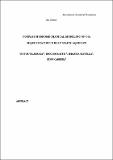Por favor, use este identificador para citar o enlazar a este item:
http://hdl.handle.net/10261/42090COMPARTIR / EXPORTAR:
 SHARE SHARE
 CORE
BASE CORE
BASE
|
|
| Visualizar otros formatos: MARC | Dublin Core | RDF | ORE | MODS | METS | DIDL | DATACITE | |

| Título: | Coupled hydromechanical modeling of CO2 sequestration in deep saline aquifers |
Autor: | Vilarrasa, Víctor CSIC ORCID ; Bolster, Diogo; Olivella, Sebastià; Carrera, Jesús CSIC ORCID | Fecha de publicación: | 2010 | Editor: | Elsevier | Citación: | International Journal of Greenhouse Gas Control 4 (6): 910-919 (2010) | Resumen: | Sequestration of carbon dioxide (CO2) in deep saline aquifers has emerged as an option for reducing greenhouse gas emissions to the atmosphere. The large amounts of supercritical CO2 that need to be injected into deep saline aquifers may cause large fluid pressure increases. The resulting overpressure may promote reactivation of sealed fractures or the creation of new ones in the caprock seal. This could lead to escape routes for CO2. In order to assess the probability of such an event, we model an axisymmetric horizontal aquifer-caprock system, including hydromechanical coupling. We study the failure mechanisms, using a viscoplastic approach. Simulations illustrate that, depending on boundary conditions, the least favorable moment takes place at the beginning of injection. Initially, fluid pressure rises sharply because of a reduction in permeability due to desaturation. Once CO2 fills the pores in the vicinity of the injection well and a capillary fringe is fully developed, the less viscous CO2 displaces the brine and the capillary fringe laterally. The overpressure caused by the permeability reduction within the capillary fringe due to desaturation decreases with distance from the injection well. This results in a drop in fluid pressure buildup with time, which leads to a safer situation. Nevertheless, in the presence of low-permeability boundaries, fluid pressure continues to rise in the whole aquifer. This occurs when the radius of influence of the injection reaches the outer boundary. Thus, caprock integrity might be compromised in the long term. | Descripción: | 38 páginas, 11 figuras. | Versión del editor: | http://dx.doi.org/10.1016/j.ijggc.2010.06.006 | URI: | http://hdl.handle.net/10261/42090 | DOI: | 10.1016/j.ijggc.2010.06.006 | ISSN: | 17505836 |
| Aparece en las colecciones: | (IDAEA) Artículos |
Ficheros en este ítem:
| Fichero | Descripción | Tamaño | Formato | |
|---|---|---|---|---|
| Vilarrasa_et_al_2010_IJGGC.pdf | 526,92 kB | Adobe PDF |  Visualizar/Abrir |
CORE Recommender
SCOPUSTM
Citations
151
checked on 06-abr-2024
WEB OF SCIENCETM
Citations
123
checked on 23-feb-2024
Page view(s)
449
checked on 19-abr-2024
Download(s)
595
checked on 19-abr-2024
Google ScholarTM
Check
Altmetric
Altmetric
NOTA: Los ítems de Digital.CSIC están protegidos por copyright, con todos los derechos reservados, a menos que se indique lo contrario.
